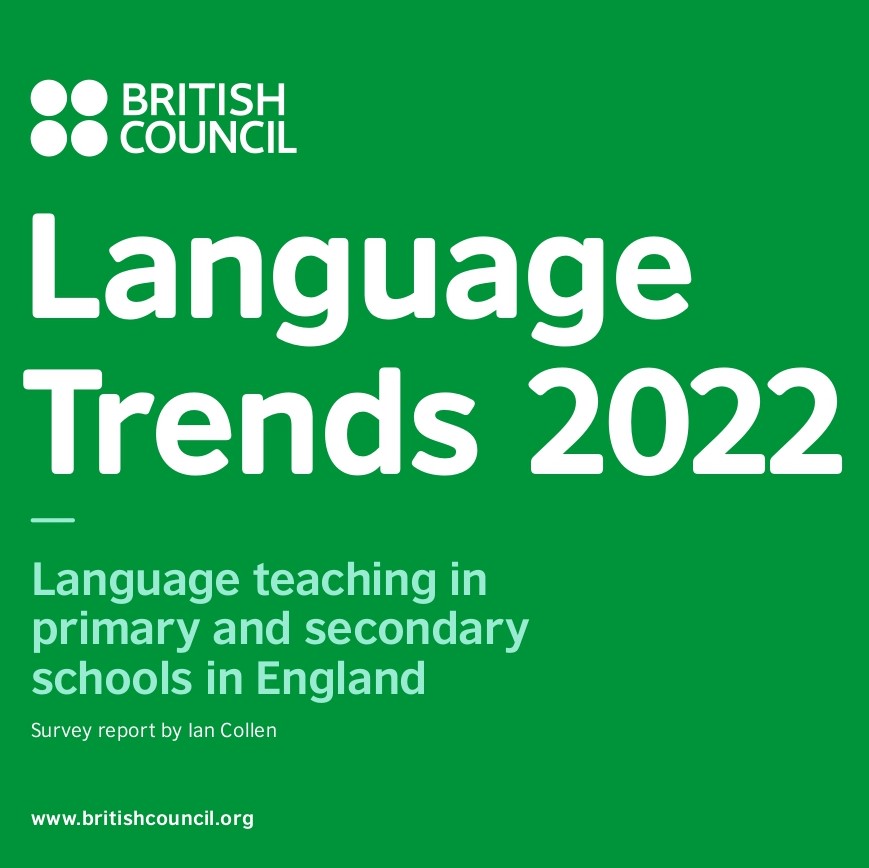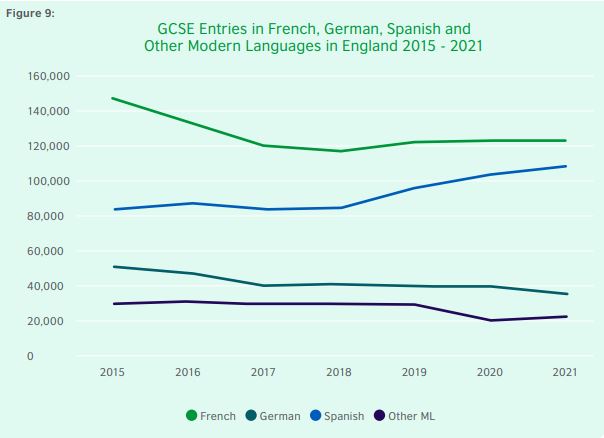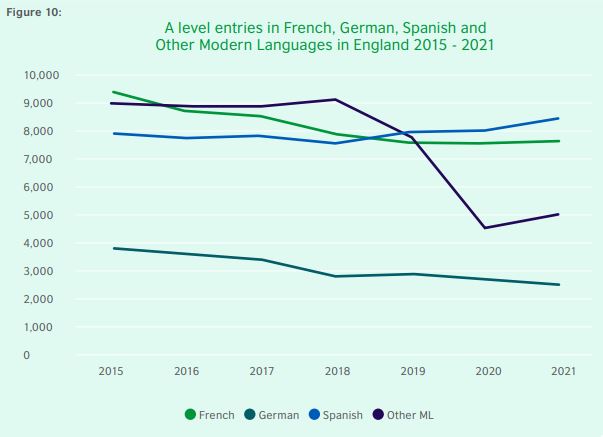Farewell/despedida
Instituto Cervantes London informs you that this blog has been temporarily suspended. While we will not be updating it with new entries, we will keep the ones we have shared with you over the years available. We would simply like to offer you our sincere thanks for reading us until now, and we hope you will be able to do so again in the future.
In the meantime, we will continue to keep you in the loop for all our activities at https://londres.cervantes.es/. Additionally, you can follow us on our social media channels.
Instagram
Facebook
BlueSky
LinkedIn
X
See you there!
Desde la sede del Instituto Cervantes en Londres os queremos comunicar que la actividad de este blog queda temporalmente suspendida. Si bien no lo actualizaremos con nuevas entradas, mantendremos publicadas las que hemos ido compartiendo con vosotros en estos años. Solo queremos daros las gracias por habernos leído hasta este momento, y esperamos que podáis volver a hacerlo en el futuro.
Entretanto, seguimos informándoos de todas nuestras actividades en https://londres.cervantes.es/. Y, además, os invitamos a seguirnos en nuestras redes:
Instagram
Facebook
BlueSky
LinkedIn
X
Season’s Greetings And Happy New Year!

¡Felices Fiestas y próspero Año Nuevo!
Rincón bibliográfico de octubre
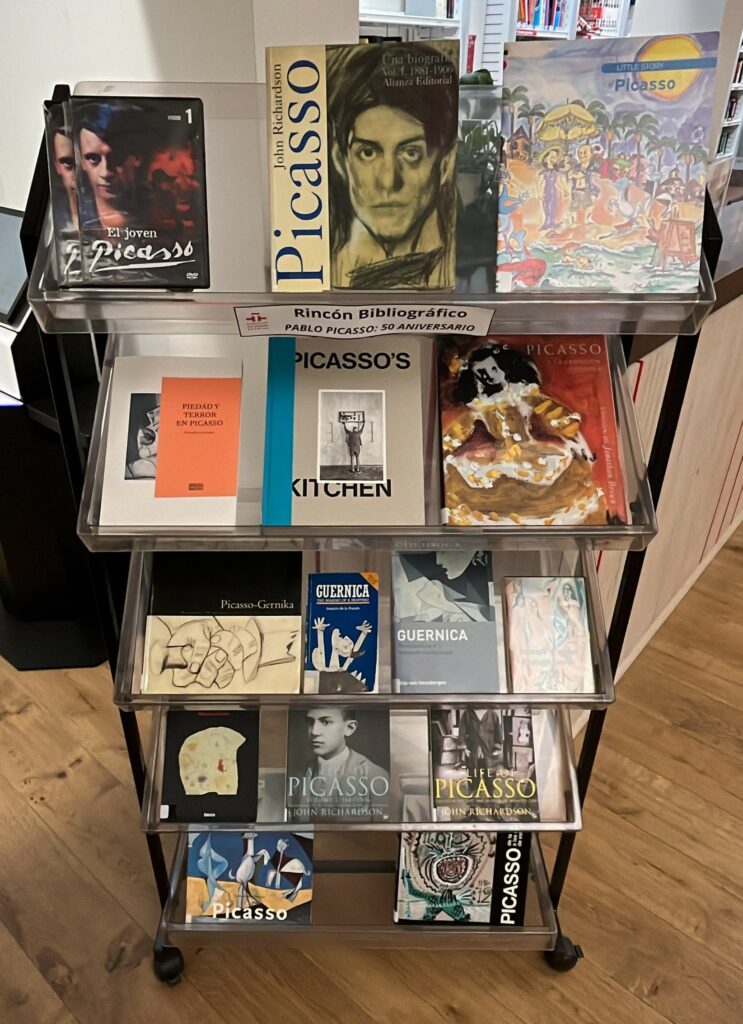
Pablo Picasso: 50 aniversario
Este año se celebra el 50 aniversario del fallecimiento del artista español Pablo Picasso (1881-1973) y por tal motivo os presentamos en nuestro rincón bibliográfico una selección bibliográfica de los muchos libros en español y en inglés que se encuentran en nuestra biblioteca sobre el artista, su vida y sus obras. También hemos añadido otros materiales no impresos que también se encuentran en nuestra colección.
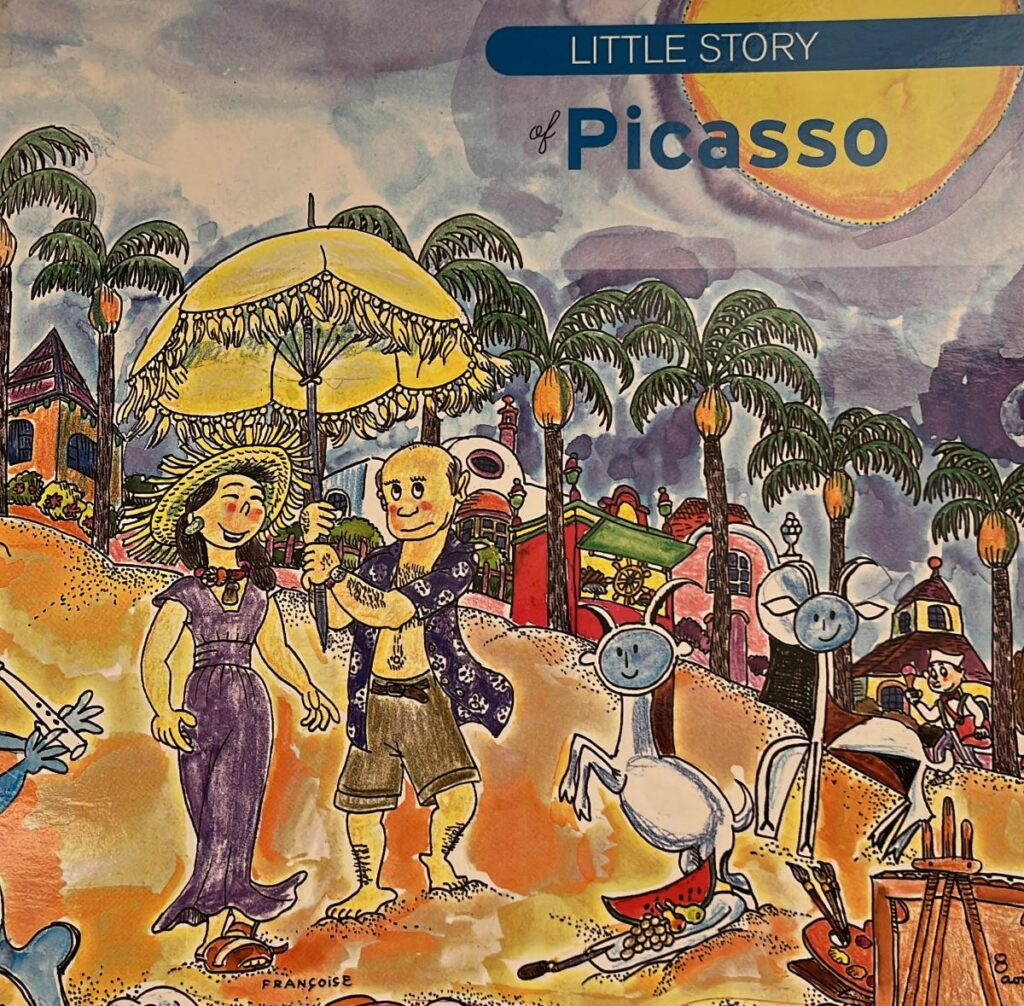
Pablo Picasso. 50th anniversary
This year marks the 50th anniversary of the death of the Spanish artist Pablo Picasso (1881-1973) and for this reason we present in our bibliographic corner a bibliographic selection of the many books in Spanish and English that are in our library about the artist, his life and his works. We have also added other non-printed materials that are also in our collection.
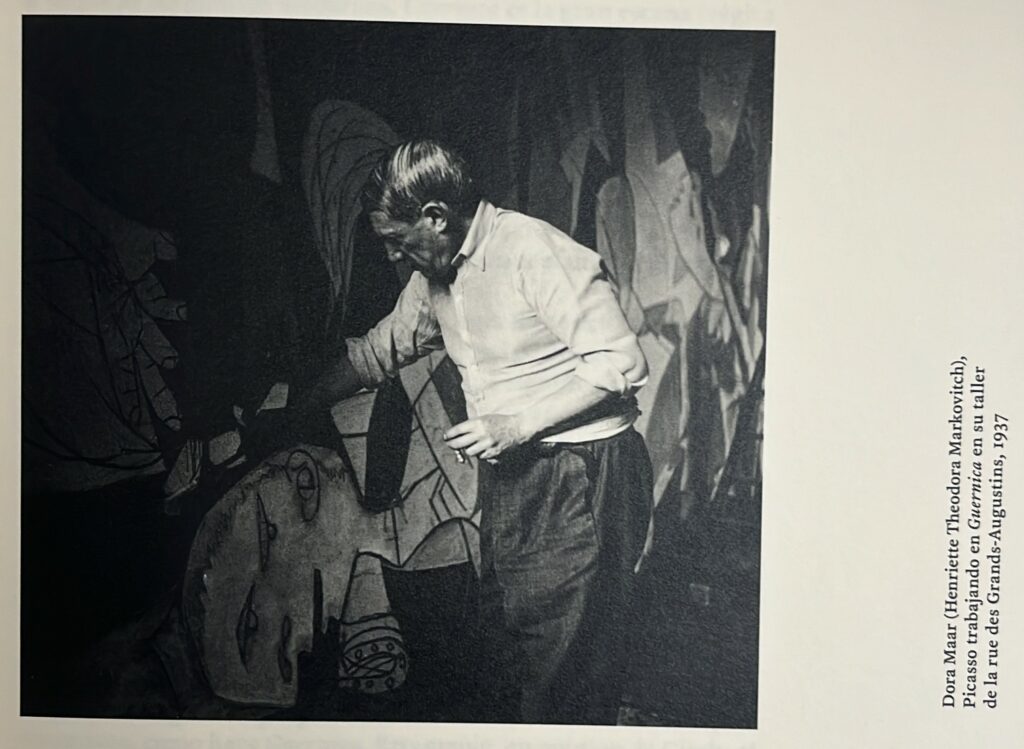
Geolocalizaciones y nuevas ruralidades
En el mes de mayo traeremos a nuestro canal de Vimeo el ciclo de cine «Geolocalizaciones y nuevas ruralidades», en el que podrás disfrutar de cuatro documentales que proponen nuevas formas de entender las comunidades rurales, que encuentran en la solidaridad y en la dependencia de unos y otros los verdaderos vínculos que han definido siempre lo humano. ¡Déjate conquistar por la vida rural!
PROGRAMA
▶️ 5 de mayo: «Soñando un lugar» (2018), de Alfonso Kint
▶️ 12 de mayo: «Os fillos da vide» (2017), de Ana Domínguez
▶️ 19 de mayo: «150 i una Grossa» (2020), de Aurora Sulli y Núria Deulofeu 8
▶️ 26 de mayo: «Los saldos» (2022), de Raúl Capdevila
El español se consolida como la lengua extranjera más popular entre los estudiantes de Bachillerato de Inglaterra
Por tercer año consecutivo, el español es, con más de 8.000 inscripciones, la lengua extranjera más popular entre los estudiantes de Bachillerato ingleses para sus exámenes de acceso a la universidad (A Levels’), según los resultados del estudio ‘Language Trends 2022’, que analiza la enseñanza de idiomas en Inglaterra, y que publica el British Council.
Los datos del citado estudio reflejan cómo esta preferencia se extiende a los cursos inferiores. Así, si se mantiene la tendencia actual, el español superará en 2026 al francés como lengua más popular en el GCSE (la titulación que acredita el fin de la educación Secundaria obligatoria en Inglaterra). Por su parte, en primaria, el francés todavía continúa siendo el idioma más demandado, con un ligero crecimiento desde 2021, que lo sitúa significativamente por delante de la lengua de Cervantes.
Para llevar a cabo el informe ‘Language Trends 2022’ se ha encuestado a profesores de más de 1.500 centros públicos y privados de primaria, secundaria e independientes de toda Inglaterra. Se trata de la vigésima edición de esta encuesta anual, que se realiza en los centros educativos de Inglaterra, con el fin de recabar información sobre la enseñanza y el aprendizaje de idiomas en el país. En el informe se ha analizado también la situación y los recursos de los centros ingleses en cuanto a enseñanza de idiomas y se han recogido datos sobre cómo ha afectado la pandemia a las actividades internacionales y al aprendizaje de idiomas, entre otros.
Regresa a Londres el Flamenco Festival: Creando en presente. Transformando el futuro
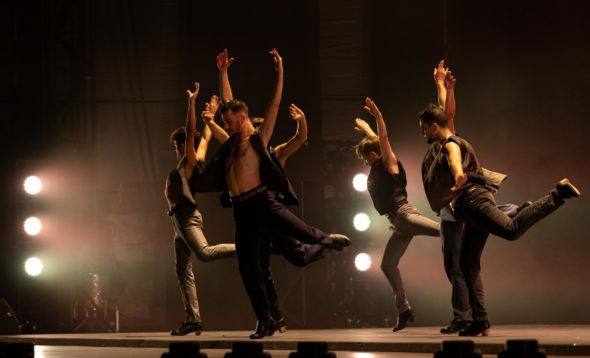
15 compañías y más de 20 funciones que desafían el presente para reinventar el futuro del flamenco con artistas de todas las generaciones: Tomatito, Estrella Morente, María Pagés, Jesús Carmona, Ana Morales, Rocío Márquez, Los Voluble, Manuel Liñán, Yerai Cortés, Paula Comitre o Ángeles Toledano, entre muchos otros.
Flamenco Festival pone rumbo a la ciudad del río Támesis para celebrar del 21 de junio al 2 de julio su XVII edición de la mano de figuras clave del flamenco contemporáneo y abriendo las puertas del festival a nuevas generaciones de artistas bajo un denominador común: la ampliación de los horizontes de este arte y el derribo de sus fronteras, cuestionando límites y logrando trascender la tradición.
Bajo el lema “Creando en presente. Transformando el futuro”,
la edición de 2022 pone su foco en los nuevos lenguajes y formas.
El pasado lunes 13 de junio, en el Hotel Macià Sevilla Kubb, Miguel Marín, director de Flamenco Festival Londres, dio a conocer un programa en el que destaca la presencia de algunos de los artistas más excepcionales del flamenco actual como Tomatito, Estrella Morente, María del Mar Moreno, Pastora Galván o Fuensanta “La Moneta»: maestros y figuras consolidadas que luchan por la actualización del lenguaje flamenco y la incorporación de nuevas formas y temas, desde la lucha social a la defensa de la figura de la mujer.
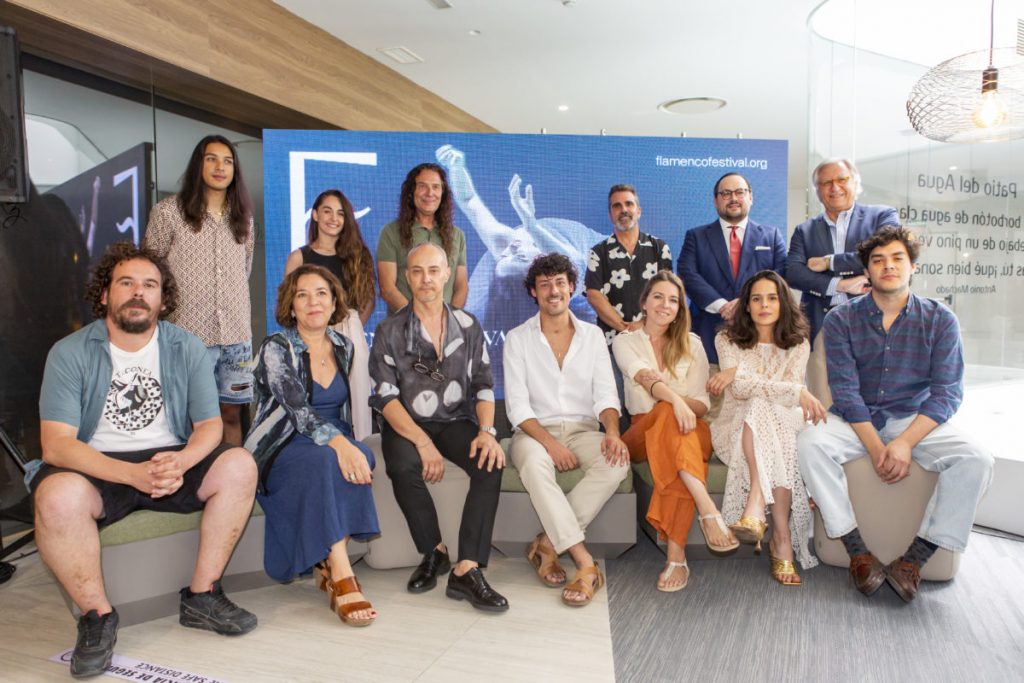
Además esta edición dará cabida a la vanguardia, la transgresión, la denuncia y la reflexión sobre el presente a través de la mirada de artistas como María Pagés, Manuel Liñán, Rocío Márquez & Broquio, Ana Morales, Jesús Carmona o Los Voluble.
Más de 6 espacios en la capital londinense, con el Sadler’s Wells como referencia, que reunirán a un público esperado de 19.500 personas.
El espectáculo que inaugurará Flamenco Festival Londres será el muy aplaudido “¡Viva!” de la Compañía de Manuel Liñán (Premio Nacional de Danza 2017), que subirá el telón del icónico escenario del Sadler’s Wells en las tardes del 21 y el 22 de junio: una auténtica celebración y reivindicación de la pluralidad en el baile.
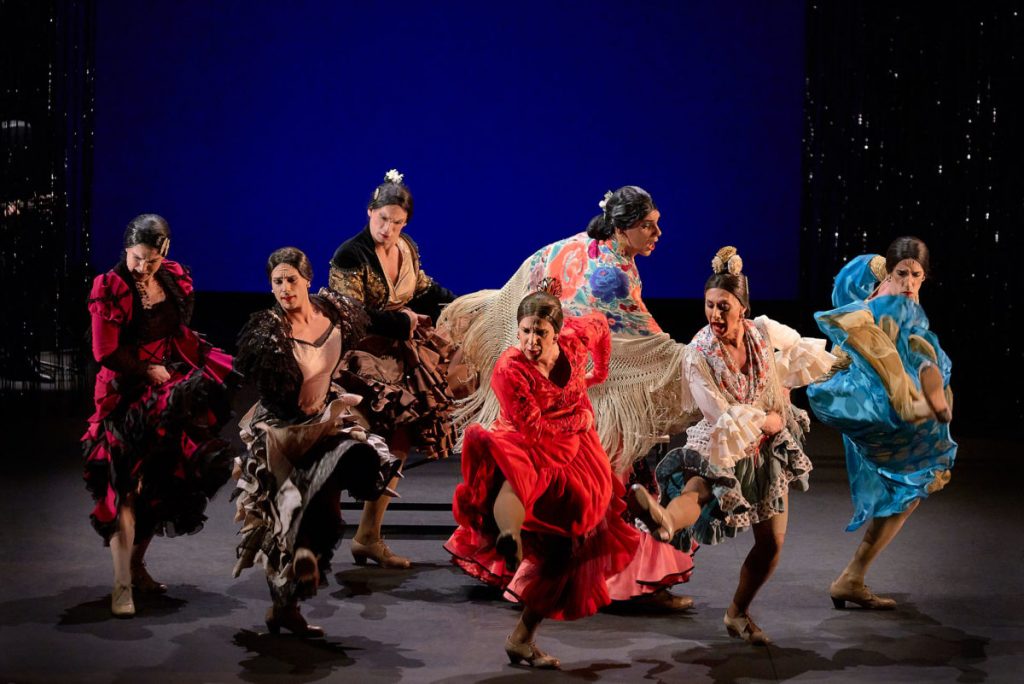
La bailaora Ana Morales le seguirá con “Sin permiso, canciones para el silencio” el 23 de junio, espectáculo que nació de los laboratorios “In Progress”, el programa de residencias artísticas de Flamenco Festival. La producción, galardonada con el Giraldillo al Baile en la Bienal de Flamenco de Sevilla, se presenta en Londres cerrando el círculo expositivo de la obra en diferentes ciudades de todo el mundo.
El multipremiado bailaor Jesús Carmona presentará “El Salto”, los días 28 y 29 de junio, en el Sadler’s Wells Theatre. Un montaje que profundiza en “el género en el movimiento” y que también tuvo sus inicios en el programa de residencias artísticas de Flamenco Festival, siendo una coproducción de este junto al Sadler’s Wells de Londres y a la Bienal de Flamenco de Sevilla.
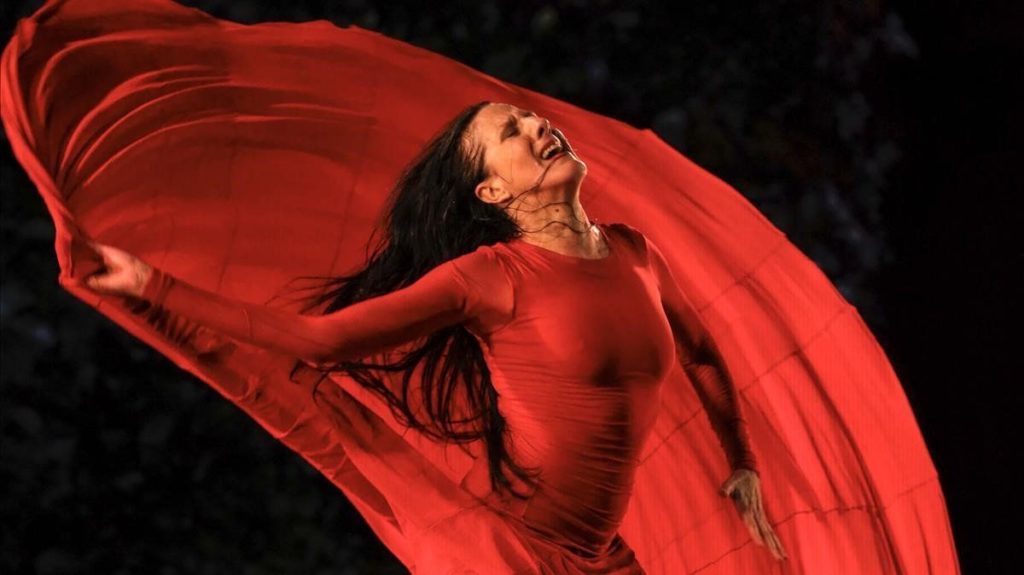
Por su parte, la coreógrafa sevillana María Pagés, otro Premio Nacional de Danza (2002), Medalla de Oro al Mérito en las Bellas Artes (2014) y Premio Princesa de Asturias de las Artes 2022, presentará “Una oda al tiempo” los días 1 y 2 de julio en el mismo espacio. La bailaora y creadora, una de las figuras de mayor trayectoria de la escena flamenca actual, exhibirá ante el público una coreografía sobre la contemporaneidad, el paso del tiempo y el necesario diálogo con la memoria.
María Pagés, Manuel Liñán, Jesús Carmona, Ana Morales, María del Mar Moreno, Rocío Márquez & Bronquio, Los Voluble…
El flamenco y la música electrónica se abrazarán por partida doble en el Lilian Baylis Studio del Sadler´s Wells en la noche del 2 de julio, como clausura de Flamenco Festival Londres 2022. Rocío Márquez y Bronquio llevan a Londres “Tercer Cielo”, trabajo también desarrollado durante su residencia artística “In Progress”, que mezcla poesía, ayeos, flamenco, pop, compás y hardcore-punk en un sorprendente e innovador acercamiento de la música electrónica al arte jondo.
Poniendo el broche de oro a Flamenco Festival 2022, Los Voluble, formado por los hermanos Pedro y Benito Jiménez, presentarán “Flamenco Is Not A Crime”, un espectáculo sobre las contradicciones, las purezas y las rarezas que nos da el flamenco y la música rave, en la que el flamenco y la electrónica se cruzan con la cultura crítica y el political remix video.
El programa de Flamenco Festival Londres 2022 destaca por la incorporación de artistas que continúan aportando al flamenco desde una mirada presente, pero profundamente ligadas a la tradición, como María del Mar Moreno, Pastora Galván o Fuensanta “La Moneta”, que los días 24 y 25 de junio ofrecerán el espectáculo “Mujeres de cal y cante”: un homenaje a la ciudad gaditana que organiza Flamenco Festival en colaboración con el Ayuntamiento de Jerez, y que tendrá su continuación en el mes de agosto en la ciudad del vino, donde la propia Fiesta de la Bulería también hará su particular homenaje a Flamenco Festival Londres.

Flamenco Festival Londres 2022 pone en alza el valor del linaje y la genealogía en el flamenco de nuestro tiempo, reconociendo los precedentes que han supuesto primeras espadas y sagas como las de Tomatito o Estrella Morente. En el caso de la artista granadina, podrá disfrutarse de un esperado concierto en el Sadler’s Wells en el atardecer del 26 de junio. En este mismo lugar, pero en la tarde del 30 de junio, se sentirá el compás y la maestría que ofrece la guitarra del artista almeriense.
Flamenco Festival Londres apuesta por la “Generación Z”: el flamenco del futuro, el flamenco que vendrá.
Flamenco Festival quiere dar voz a la “Generación Z”, ese grupo de artistas nacidos en la segunda mitad de los 1990, como Ángeles Toledano, Paula Comitre, El Yiyo, Yerai Cortés, Daniel Ramos & Víctor Martín o Irene Ortega, que está cambiando la manera de relacionarse con el flamenco, incorporando nuevas perspectivas, apostando por la vanguardia y la fusión con otros géneros como la electrónica.
Un año más, el Cervantes Theatre de Londres, dirigido por el actor español Jorge de Juan, será una de las sedes del festival, y en esta ocasión, abrirá sus puertas a Yerai Cortés, Ángeles Toledano e Irene Ortega. Los tres artistas ofrecerán sendos recitales en este espacio en las tardes de los días 23, 24 y 25 de junio respectivamente.
No será la única cita del día 23 de junio, ya que la Compañía de Daniel Ramos y Víctor Martín hará lo propio en dicha jornada, a las 20 h, en el Lilian Baylis Studio del Sadler´s Wells, con “Boreal”: un montaje que nos muestra todas las vertientes de la danza española en escena, a través de diversos elementos como el mantón, la bata de cola, el abanico y los palillos.
La joven Paula Comitre hará vibrar al público en el Rich Mix – The Studio de Londres, el día 25 de junio, con “Cuerpo nombrado”, una alternancia de diferentes bailes que inundarán toda la sala que acoge el espectáculo. El mismo día y en el mismo espacio, podremos disfrutar de “El Yiyo & Su Troupe” la reflexión con la que El Yiyo, calificado por la crítica como “intensamente racial”, recorre sus emociones y experiencias vividas en los escenarios.
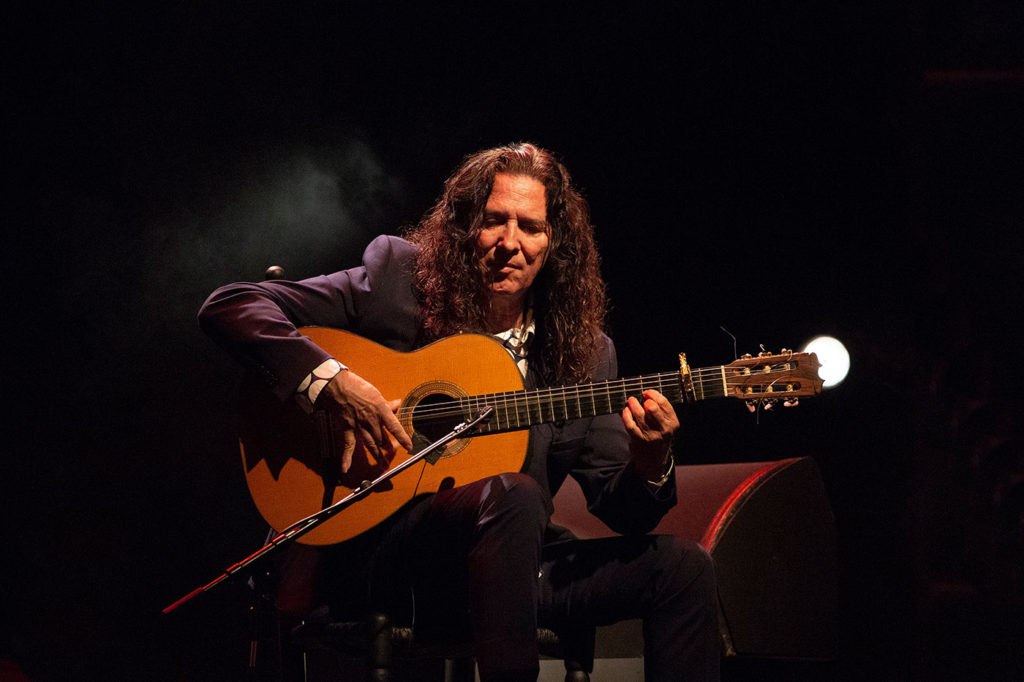
El flamenco más allá de los escenarios: el Congreso Mundial del Flamenco
En el marco del Congreso Mundial del Flamenco del Instituto Cervantes, la artista Ángeles Toledano presentará su recital “1995” en el Instituto Cervantes de Leeds el 23 de junio, mientras que Paula Comitre hará lo propio el domingo 26, en el Instituto Cervantes de Manchester con “Cuerpo nombrado”.
Además, el periodista especializado en flamenco Luis Ybarra impartirá en el mismo espacio la conferencia “La Generación Z, una nueva forma de ver el flamenco” el jueves día 30 de junio. Esa misma conferencia también podrá ser escuchada el día anterior, miércoles 29 de junio, en el Instituto Cervantes de Londres, un espacio que acogerá también, el día 24, “Flamenco. Made for Europe. Del Ole! Al Wow”, una conferencia a cargo de la periodista sevillana Sara Arguijo.
Flamenco Festival Londres 2022 es un proyecto de Flamenco Festival junto al Sadler’s Wells y el Teatro Cervantes de Londres. Cuenta con el apoyo del Instituto Nacional de Artes Escénicas y de la Música del Ministerio de Cultura y Deporte del Gobierno de España, el Instituto Cervantes como parte de su Congreso Mundial de Flamenco y el Ayuntamiento de Jerez de la Frontera (Cádiz) y Acción Cultural Española, a través del Programa para la Internacionalización de la Cultura Española (PICE). Además, cuenta con la colaboración del Ayuntamiento de Huelva, la Agencia Andaluza de Instituciones Culturales de la Consejería de Cultura y Patrimonio Histórico de la Junta de Andalucía y el Ayuntamiento de Murcia.
Our library welcomes the Trader Faulkner Collection
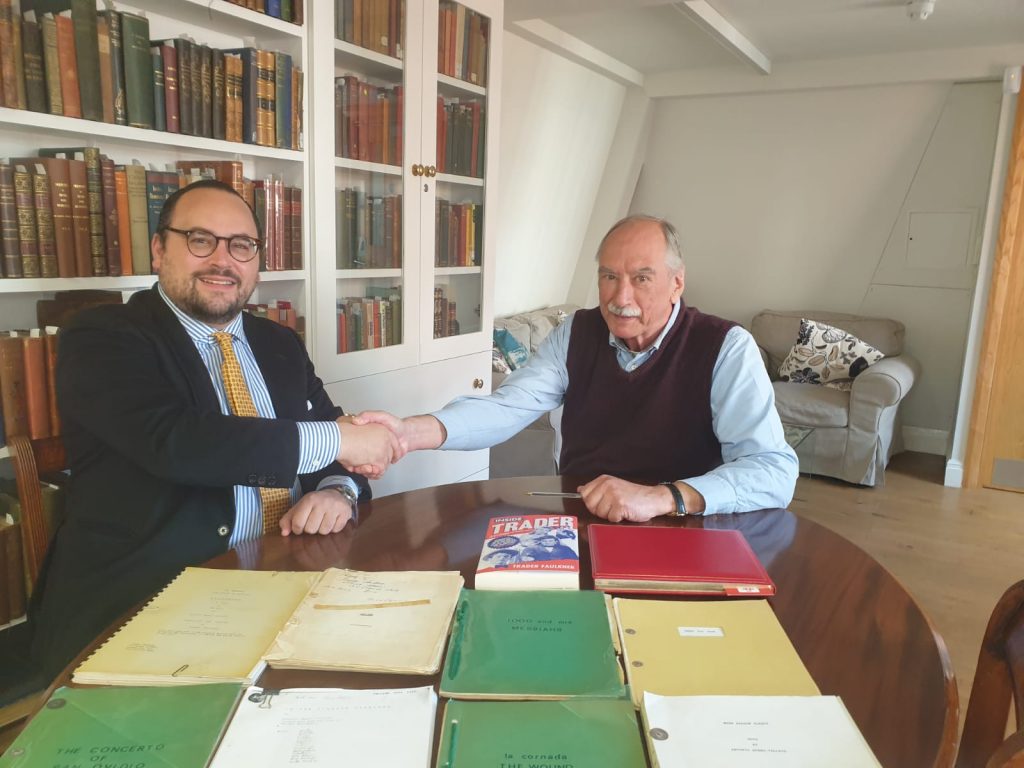
We are happy to introduce you to the Trader Faulkner Collection, the latest donation received in our library. This collection is made up of 90 books, audio CDs, some manuscripts of his translations and some memorabilia. Acting on the executor’s behalf, William Roberts gave us the originals on May 12 at Instituto Cervantes London.

The actor, author, flamenco dancer and hispanophile Trader Faulkner passed away in April 2021 in London, leaving behind a wealth of material related to Spain and Spanish culture.
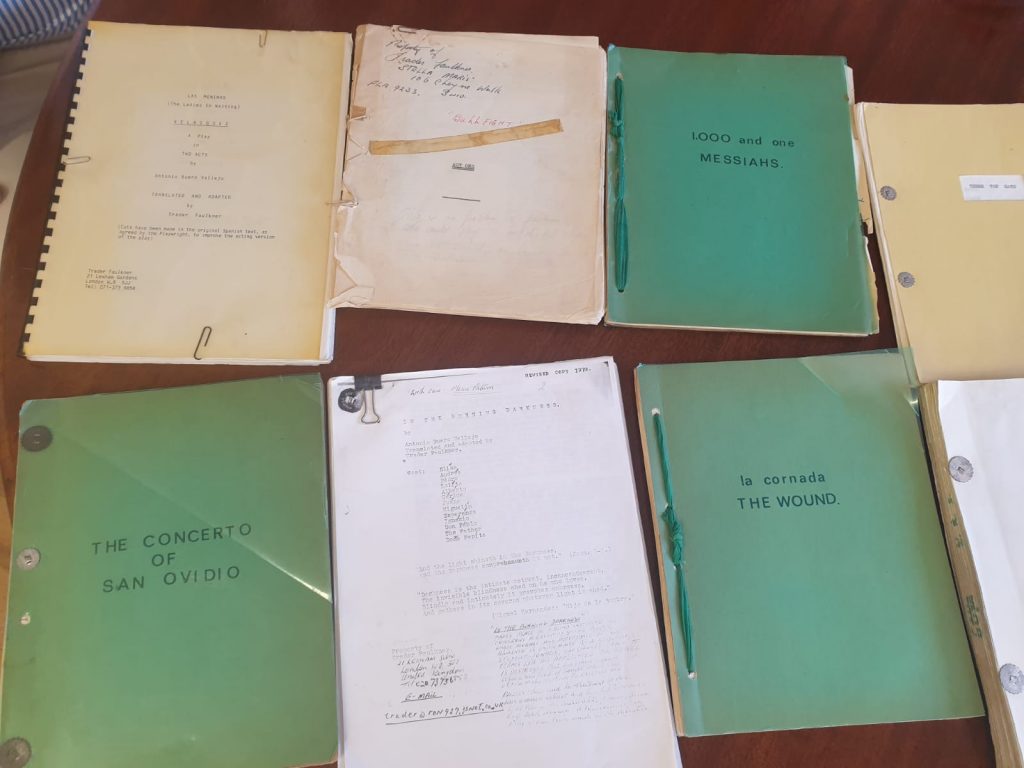
He was born in Australia, but moved to London in 1950 and immediately embarked on a long and distinguished career as an actor. Shortly after his arrival in London he saw Antonio the Dancer’s flamenco group in a theatre in Shaftesbury Avenue, and immediately fell in love with flamenco dancing.
He decided to study flamenco to use the discipline and skills used in flamenco dancing to help him with his movement and balance as an actor. However, he did perform as a flamenco dancer, in his own company ‘Los Rondeños’ (at the Teatro Real de la Corte, among other venues), and was eventually invited by Antonio el Bailarín to dance Farruca when his company performed at the Paladium.
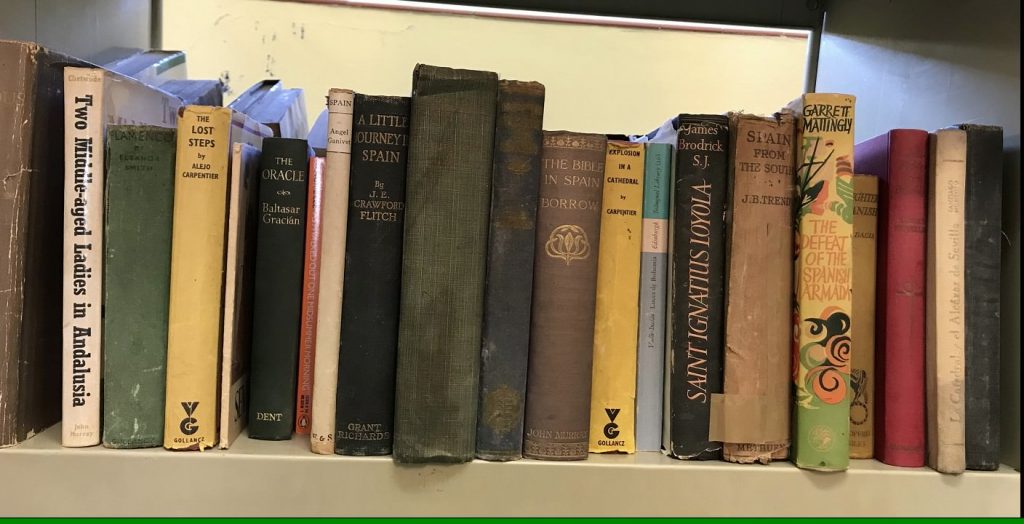
Trader studied flamenco with many of the great’s flamenco dancers, including El Cojo de Madrid, Carmen Amaya, Antonio el Bailarín and Antonio Gades, and became friends with many of them. He was also a close friend of Paco Peña.
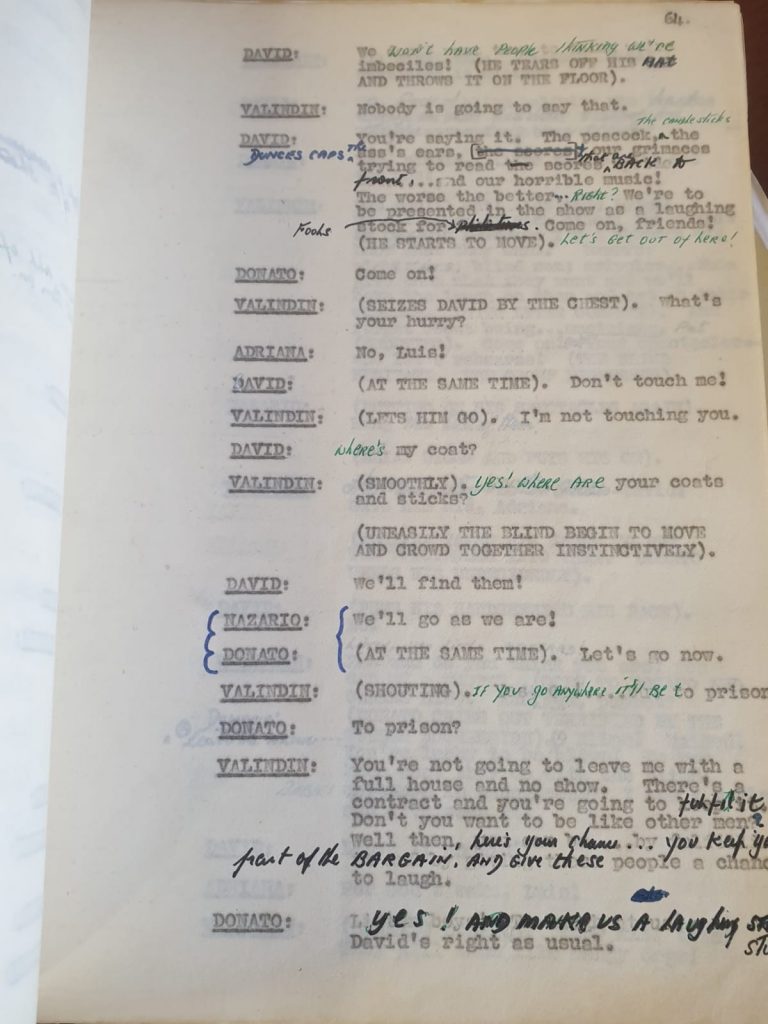
He ended his career as an actor by putting together a theatrical evocation of the life and work of perhaps Spain’s greatest recent poet/playwright, Federico García Lorca.
As the years passed and his love of Spanish continued, he translated several classic Spanish plays into English, one of which, Divinas Palabras by Miguel del Valle Inclán, was performed at the National Theatre in the UK.
For his work in bringing Spanish culture to Britain, in 1983 Trader was awarded the Order of Civil Merit by King Juan Carlos.
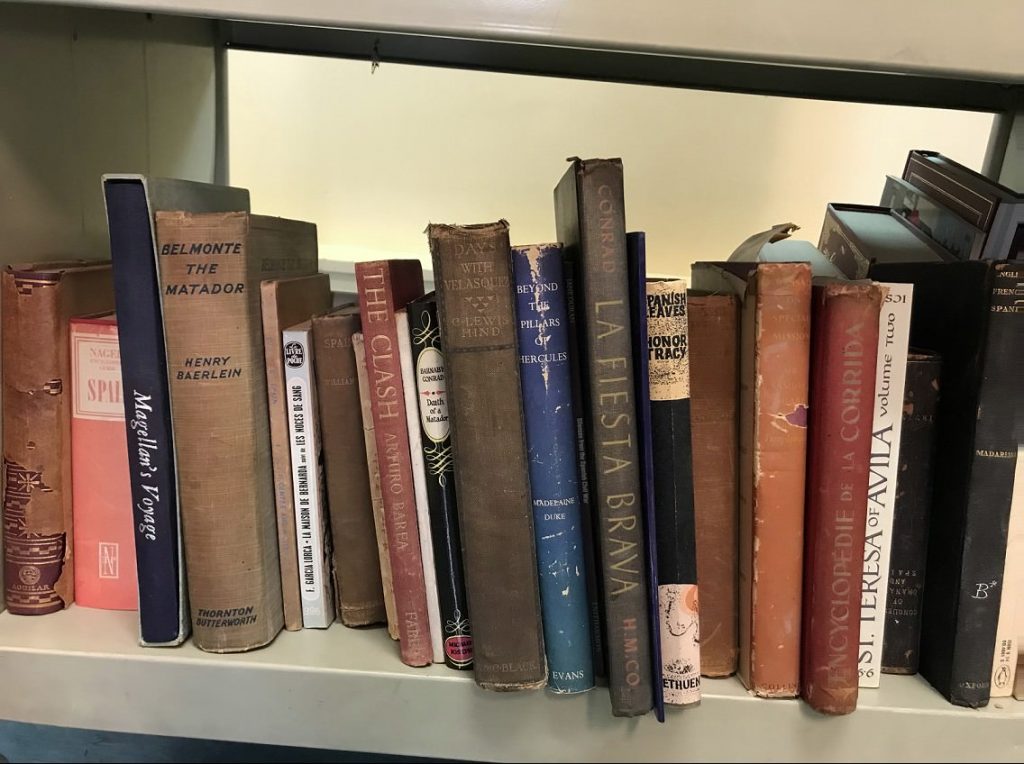
When Trader passed away, he left behind a wealth of material collected over the years relating to Spain and its culture, which his family and friends have generously donated to our library.
It should also be noted that Trader performed at the former Spanish Institute in 1991 (now Instituto Cervantes) including extracts from his Lorca show, as one of the cassettes in our library shows.
To see the complete collection click here.
Easy Reading: Spanish writer Cristina Morales’ first book to be published in the UK

The daring and provocative novel ‘Easy Reading’ about bodies, sex, politics and disability by the prize-winning Spanish writer Cristina Morales and her first to be published in the UK.
Ángela, Patricia, Marga and Nati are cousins living together in Barcelona. As women branded as disabled who share a state-subsidised flat, they must fight every day to retain their independence and find new and inventive ways – from dance to underground zines – to stop the state from managing every aspect of their lives.
Funny and furious, ‘Easy Reading’ is an indictment of the institutions that stigmatise individuals as disabled and of the language that marginalises them. It is also a portrait – visceral, vibrant, combative – of contemporary Barcelona. But, above all, Easy Reading is a feminist celebration of the body in all its forms, of female desire and queer sexuality, and of the transgressive and revolutionary power of language.
Translated from the Spanish by Kevin Gerry Du
Cristina Morales was born in Granada, Spain. She is the author of four novels and a collection of short stories. Easy Reading, her fourth novel, was awarded the Herralde Prize and the Spanish National Book Award, and became an overnight bestseller. In 2021, she was named a Granta Best Young Spanish-Language Novelist. Morales works with the contemporary dance company Iniciativa Sexual Femenina and is executive producer of the punk band At-Asko.
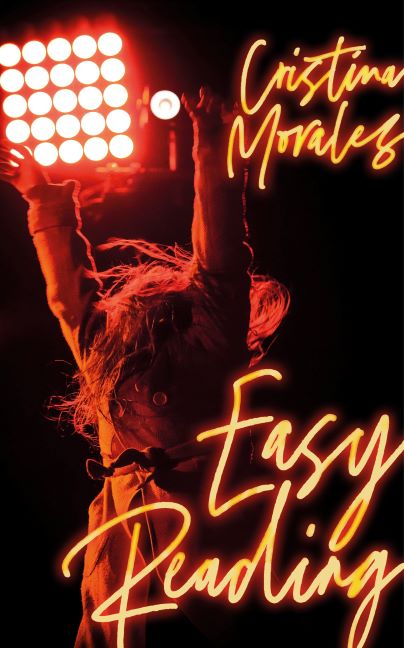
‘Punk rock has arrived in Spanish literature’ El Pais
‘A force of nature’ ABC
‘Offensive, playful, transgressive, hilarious, visceral, combative, brutal, and yet somehow tender… A book that shook me to my core’ Esquire
‘The most brutal, provocative and hilarious voice in contemporary Spanish literature. Like an unexpected meeting between Kathy Acker and Camilo José Cela in a gynaecologist’s waiting room. Extraordinary’ Paul B. Preciado
Winner of Spain’s National Book Award
EASY READING, by Cristina Morales
Published 24 March 2022
by Jonathan Cape, part of Vintage | £14.99 | TPB | 9781787332676
Translator Anna Crowe on Margarit’s poetry

Translator Anna Crowe is the co-founder of StAnza, Scotland’s Poetry Festival, her translations of the late Catalan poet, Joan Margarit, brought her a Society of Authors Travelling Scholarship in 2005. Margarit’s two final collections were published in November 2021 by Bloodaxe Books as Wild Creature. Bloodaxe have published three previous collections of his work, Tugs in the fog (awarded a Recommendation for translation in 2006 by the Poetry Book Society), Strangely Happy and Love is a Place. She has translated several books for Arc Publications: an anthology of Catalan poetry (Six Catalan Poets, Arc, 2013); a collection by the Mexican poet, Pedro Serrano (Peatlands, Arc Publications 2014); a collection of work by the Mallorcan poet Josep-Lluís Aguiló, (Lunarium, 2016); and a collection by the Catalan poet Manuel Forcano (Maps of Desire, Arc 2019), awarded a PBS Recommendation.
Crowe is the co-founder of StAnza, Scotland’s International Poetry Festival and served as Artistic Director for the first seven years, from 1998 – 2005, and subsequently on the Board of Trustees. Her poetry has been translated and anthologised, and recorded for the Poetry Archive. Figure in a Landscape was written in memory of her sister, and in collaboration with the Mallorcan artist, Andreu Maimó. It was published by Mariscat Press, and in a bilingual illustrated edition by Ensiola in Mallorca, and received the Calum MacDonald Award and was a Poetry Book Society Choice; her third full collection is Not on the Side of the Gods (Arc, 2019) and was described the poet, Stewart Conn, as offering ‘an illuminating insight into the marvels of an uncanny links between the natural world and its creatures, and the shifts of light and shade in our own lives’. She is at present working on another collaborative book with Andreu Maimó, to be called Words on the Wind/Paraules al Vent, to be published by Ensiola. She was born in Plymouth, went to school in Marseille and Sussex, and read French and Spanish at the University of St Andrews, where she lives with her husband, Dr Julian Crowe. They have three children and five grandchildren.
- How would you describe Margarit poetry?
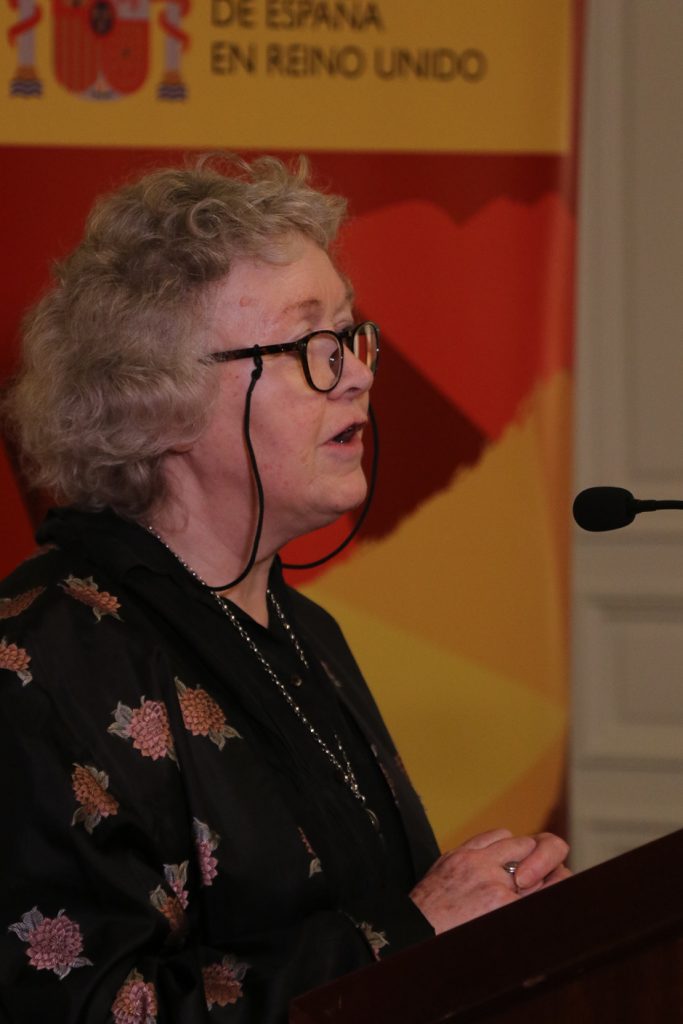
I would describe JM’s poetry as unflinchingly honest. Grief and loss are confronted courageously. He himself described his poetry to me as ‘harsh, rough, even hard’, but there is always a warmth and humanity running through it. He had no time for mystification, especially the religious kind. As he says in ‘Reasons and ways’, ‘I value what’s real: iron when it was being forged/into a nail or a plough, any feeling that I/can recognise in a clean and clear shape.’
His poetry reveals a great love and understanding of music and art, of Schubert, JS Bach, Mozart, Beethoven, Shostakovich, the French chansonniers such as Jacques Brel, Léo Ferré, Geurges Brassens, and all the great jazz musicians.
Van Gogh’s work he loved: ‘Painter of firmaments, clogs, beds, chairs/and fields of wheat that crows fly over.’ Brueghel and Hokusai, Lucian Freud, Francis Bacon, Paula Rego – all painters who paint the everyday, the disturbing, dirty, seamy side of life – these he admired. And the same goes for other poets, such as Philip Larkin, Carles Riba, Josep Carner, Baudelaire, Verlaine, Juan Ramón Jiménez, Elizabeth Bishop, RS Thomas and his beloved Thomas Hardy. Homer, above all. The Iliad is always just below the surface of Margarit’s poems, and his poetry embraces the human experience in all its plurality, strangeness and tragedy.
2. Could you tell us more about the translation process?
Listening to the sounds, the music, of a poem comes first and is of supreme importance. I carry a poem around in my head, living inside it. The translation must reflect the tone of voice, the mood of the original. I check all unfamiliar words to see if there are unsuspected nuances to be aware of. Then I think the poem through in English. The translator, to my way of thinking, should not stand in the way of the poem, or insert his or her own experience into their version. For Margarit’s poetry it has to be clear, straightforward, unpretentious English but should convey something of the rhythms and sounds, wherever possible, of the Catalan. These two languages have a certain affinity, since Catalan, like English, is a consonantal language and has a lot of monosyllabic words and words with masculine endings, so it is not too hard to find equivalent sonic patterns and rhythms. Joan told me, some years ago, ‘I discovered quite early that we sing from the same music, and from that moment on, I ceased to worry.’ He sent me his poems by email and I sent my translations back, and goodness knows how many hundreds, probably several thousands, of emails flew back and forth! He always sent me the Proa editions as soon as they were published, always with affectionate dedications. He would also send the Castilian versions, as he knew my Castilian had been learned before the Catalan and my spoken Castilian was far more fluent than my Catalan, so this was sometimes helpful in decoding an obscure word.
3. What were the biggest challenges during the translation?
The biggest challenge, especially at the beginning, was to make sure the tone was right, and the tone was often brusque and hard. As I have said elsewhere, with poetry like Margarit’s the translator has nowhere to hide. I often felt exposed and that the poetry was almost painfully bare, but the harsher and barer it was, the closer it seemed to get to the bones and the truth of the poem. Another, more amusing, challenge was persuading Joan, from time to time, of the rightness of my choice of English words or expressions unfamiliar to him. He would try to suggest something that would have been absurd or give an unsuitable nuance to the writing. Instead of using a decent dictionary, he would produce from his pocket a little electronic gadget which was a sort of dictionary, but which gave almost no clue as to context, so the suggestions were sometimes hilarious!
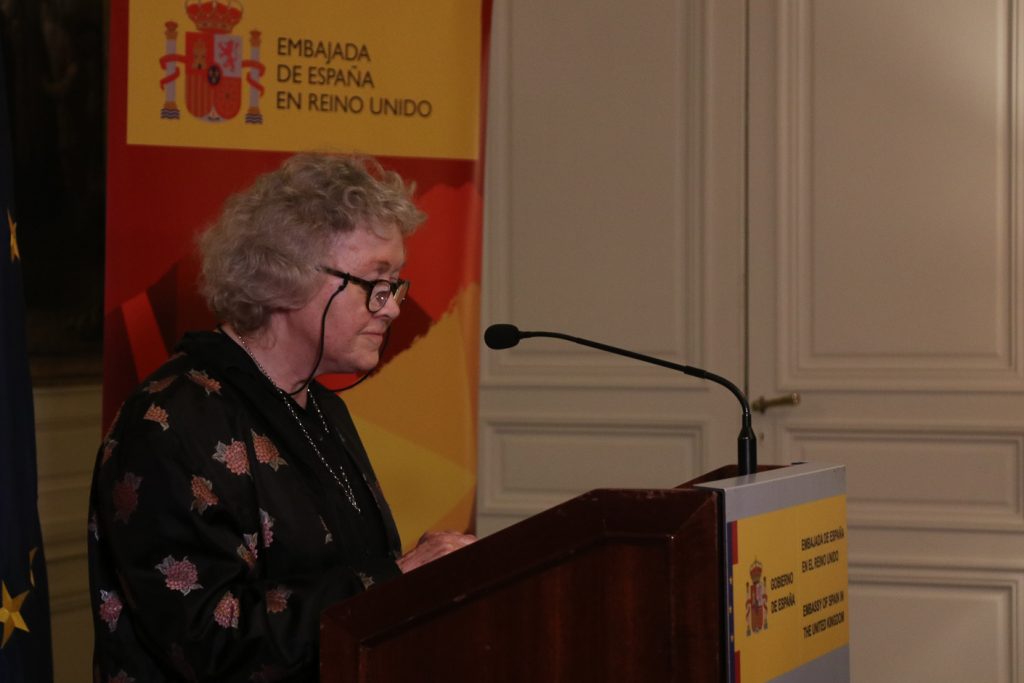
4. Is there any special poem that you would like to mention?
One of Margarit’s poems I love best is from Tugs in the fog, and that is ‘Goodbye to Uncle Lluís’, the uncle who died at the Teruel front in the Spanish Civil War, leaving among his few possessions a cassette player that had in it a recording of the song of a nightingale. There is something of the First World War poet, Edward Thomas, another bird-lover, in this poem whose last two lines are
He will never go back to the river
to record the night birds singing.
But from Wild Creature it would have to be ‘In the early morning’. I find this a very moving poem: the poet and his wife are awake and reading, but the poet turns off his light and lies down. He knows the time left to him is now short:
… I know that where I am gazing
we will end up going with bare feet:
these feet of ours that have searched for each other
beneath the sheets for such a long time …
This is an intimate, tender, domestic image, but it does double duty, since it also carries the knowledge of his approaching death, and the poem continues, linking their reading in bed to the ‘headlights on the deux chevaux’, the little car that used to take them long ago
… along tiny roads
in a world without motorways, where we had to
stop for the night when going to Paris.
The poem succeeds in being a love poem and a poem that faces up to death, as well as a poem celebrating memory and the freedom of going to Paris in the dark days of the Francoist dictatorship. We might call it a ‘bobbed sonnet’ since it is a love poem with a volta between lines 8 and 9, but has 13 not 14 lines, something that to me suggests the poet’s approaching death, the cutting short of a life. Here is the poem in full:
IN THE EARLY MORNING
I have turned off my light and lain down.
You go on reading beside me.
What I’m doing is turning my back on the world,
but I know that where I am gazing
we will end up going with bare feet:
these feet of ours that have searched for each other
beneath the sheets for such a long time.
There is no gesture as warm as this.
You and I, reading in bed early in the morning,
we’re like the headlights on the deux chevaux
that used to carry us along tiny roads
in a world without motorways, where we had to
stop for the night when going to Paris.
5. Could you tell us your opinion of the breadth of Margarit’s readership in the United Kingdom?
I believe that Joan Margarit has been widely read by the poetry-reading public in the UK ever since the publication of Tugs in the fog in 2006, and Bloodaxe have of course published three more books (themselves containing two or three of his collections) since then, so sales must have been good! I know that he is greatly admired by poets of the calibre of Kerry Hardie, Paul Durcan, and Moya Cannon in Ireland, by Menna Elfyn, Professor Emerita of Poetry at the University of Wales Trinity St David, and in Scotland by the first Edinburgh Makar, Stewart Conn, and Vicki Feaver, former Professor of Creative Writing at the University of Chichester. Joan and I have read together at many poetry festivals, including here at StAnza (twice), the South Bank Festival (London), at Newcastle University, and at four separate festivals down the years in the Republic of Ireland, namely Dún Laoghaire (attended by Seamus Heaney and Derek Mahon!), Galway, Limerick, and Cork.
Parallel Mothers premieres in the UK on January 28th
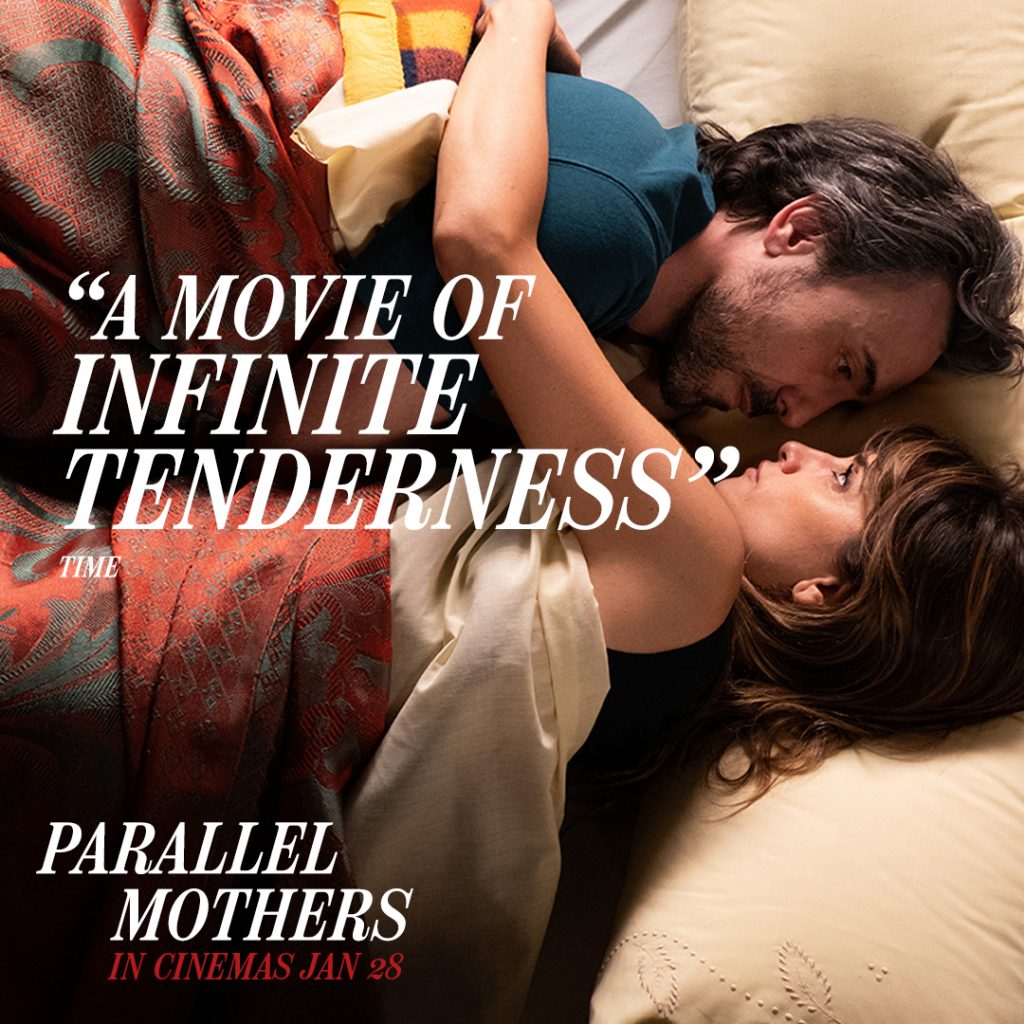
Parallel Mothers, the latest movie directed and written by Pedro Almodóvar, premieres in UK’s cinemas on January 28th. The Spanish director reunites with his muse Penelope Cruz for this moving, intriguing drama.
Two women, Janis and Ana, meet in a hospital where they are about to give birth. Both are single and became pregnant by accident. Janis, middle-aged, has no regrets and is exultant. The other, Ana, an adolescent, is scared and repentant. Janis tries to encourage her as they move like sleepwalkers through the hospital corridors. The few words they exchange in these hours will create a very close link between them, which by chance will develop and complicate, changing their lives in a decisive way.
